Charles Dickens knew the Medway towns well. Maidstone, or ‘Muggleton’, as he called it, featured in The Pickwick Papers. First published in monthly parts (during March 1836–October 1837), it is one of his best-known works.
A plaque documenting this history of The Muggleton Inn.
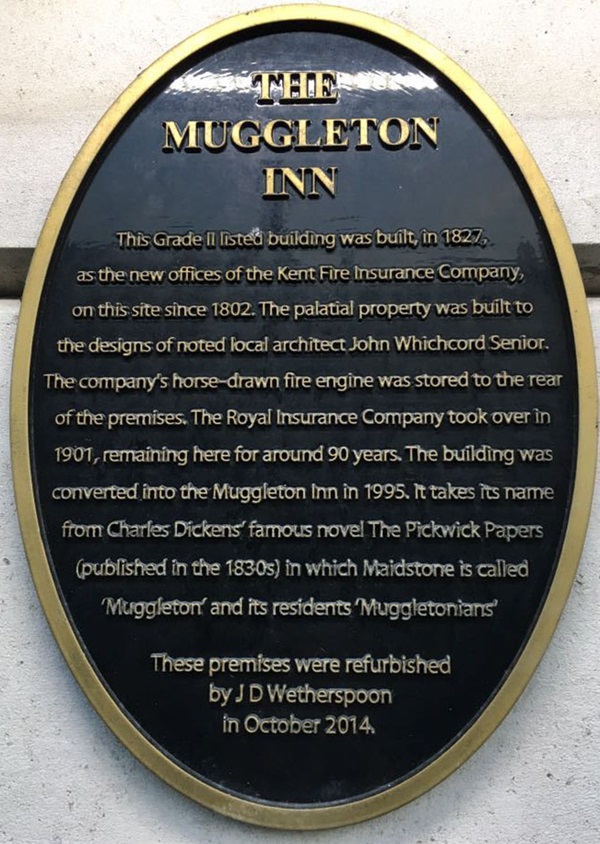
The plaque reads: This grade II listed building was built in 1827, as the new offices of the Kent Fire Insurance Company, on this site since 1802. The palatial property was built to the designs of noted local architect John Whichcord Senior. The company’s horse-drawn fire engine was stored to the rear of the premises. The Royal Insurance Company took over in 1901, remaining here for around 90 years. The building was converted into The Muggleton Inn in 1995. In takes its name from Charles Dickens’ famous novel The Pickwick Papers (published in the 1830s) in which Maidstone is called ‘Muggleton’ and its residents ‘Muggletonians’.
These premises were refurbished by J D Wetherspoon in October 2014.
A photograph and text about the history of The Muggleton Inn.
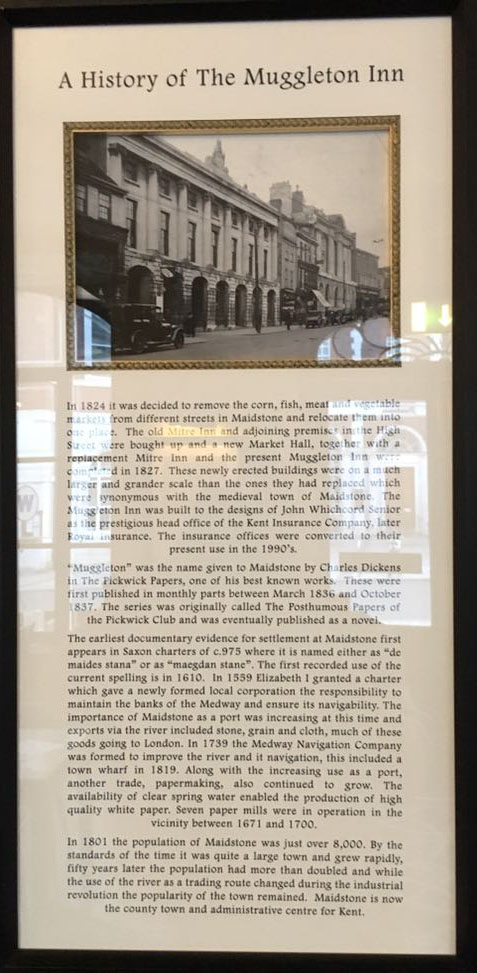
The text reads: In 1824 it was decided to remove the corn, fish, meat and vegetable markets from different streets in Maidstone and relocate them into one place. The old Mitre Inn and adjoining premises on High Street were bought up and a new Market Hall, together with a replacement Mitre Inn and the present Muggleton Inn were completed in 1827. These newly erected buildings were on a much larger and grander scales than the ones they had replaced which were synonymous with the medieval town of Maidstone. The Muggleton Inn was built to the designs of John Whichcord Senior as the prestigious head office of the Kent Insurance Company, later Royal Insurance. The insurance offices were converted to their present use in the 1990s.
‘Muggleton’ was the name given to Maidstone by Charles Dickens in The Pickwick Papers, one of his best known works. These were first published in monthly parts between March 1836 and October 1837. The series was originally called The Posthumous Papers of the Pickwick Club and was eventually published as a novel.
The earliest documentary evidence for settlement at Maidstone first appears in Saxon charters of c975 where it is named either as ‘de maides stana’ or as ‘maegdan stane’. The first recorded use of the current spelling is in 1610. In 1559 Elizabeth I granted a charter which gave a newly formed local corporation the responsibility to maintain the banks of the Medway and ensure its navigability. The importance of Maidstone as a port was increasing at this time and exports via the river included stone, grain and cloth, much of these goods going to London. In 1739 the Medway Navigation Company was formed to improve the river and its navigation, this included a town wharf in 1819. Along with the increasing use as a port, another trade, papermaking, also continued to grow. The availability of clear spring water enabled the production of high quality white paper. Seven paper mills were in operation in the vicinity between 1671 and 1700.
In 1801 the population of Maidstone was just over 8,000. By the standards of the time, it was quite a large town and grew rapidly, fifty years later the population had more than doubled and while the use of the river as a trading route changed during the industrial revolution the popularity of the town remained. Maidstone is now the county town and administrative centre for Kent.
A plaque commemorating the essayist and critic, William Hazlitt, who was born near here.
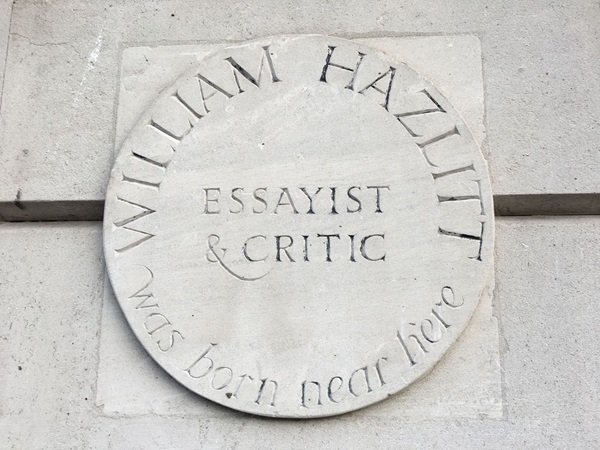
A photograph showing the front exterior of the building as the Kent Insurance Offices in the early 1900s.
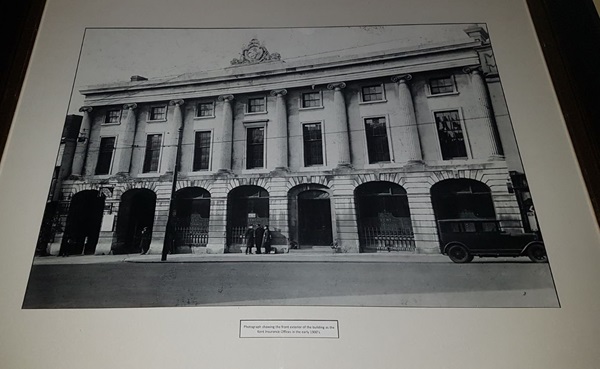
Text about the Kent Insurance Company.
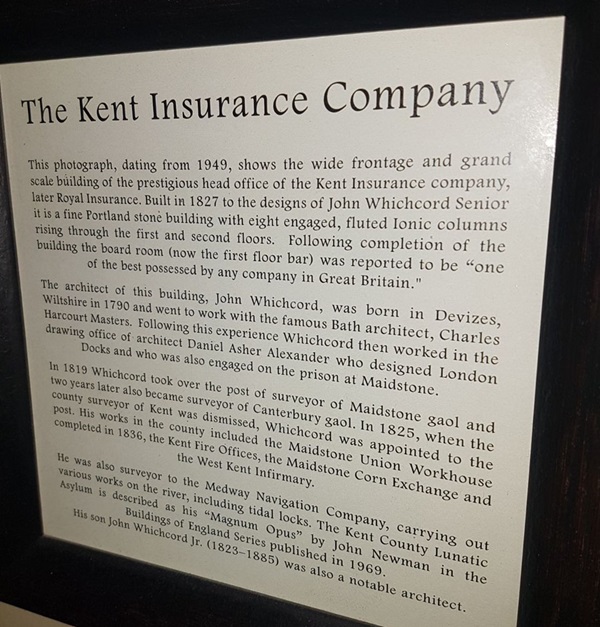
The text reads: This photograph (above), dating from 1949, shows the wide frontage and grand scale building of the prestigious head office of the Kent Insurance Company, later Royal Insurance. Built in 1827 to the designs of John Whichcord Senior it is a fine Portland stone building with eight engaged, fluted ionic columns rising through the first and second floors. Following completion of the building the board room (now the first floor bar) was reported to be “one of the best possessed by any company in Great Britain”.
The architect of this building, John Whichcord, was born in Devizes, Wiltshire in 1790 and went to work with the famous Bath architect, Charles Harcourt Masters. Following this experience Whichcord then worked in the drawing office of architect Daniel Asher Alexander who designed London Docks and who was also engaged on the prison at Maidstone.
In 1819 Whichcord took over the post of surveyor of Maidstone gaol and two years later also became surveyor of Canterbury gaol. In 1825, when the county surveyor of Kent was dismissed, Whichcord was appointed to the post. His works in the county included the Maidstone Union Workhouse completed in 1836, the Kent Fire Offices, the Maidstone Corn Exchange and the West Kent Infirmary.
He was also surveyor to the Medway Navigation Company, carrying out various works on the river, including tidal locks. The Kent County Lunatic Asylum is described as his “Magnum Opus” by John Newman in the Buildings of England Series published in 1969.
His son John Whichcord Junior (1823-85) was also a notable architect.
A photograph showing the back exterior of the premises taken in the early 1900s.
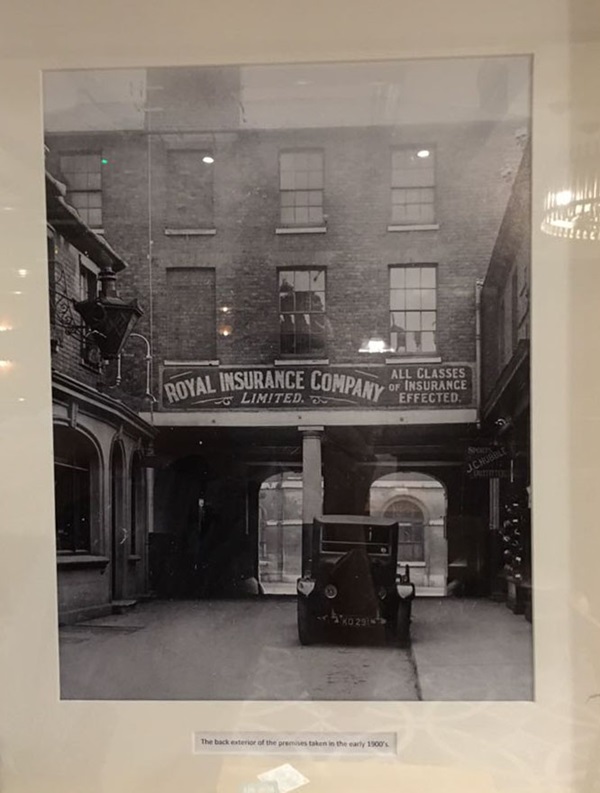
The plans for the Royal Insurance company.
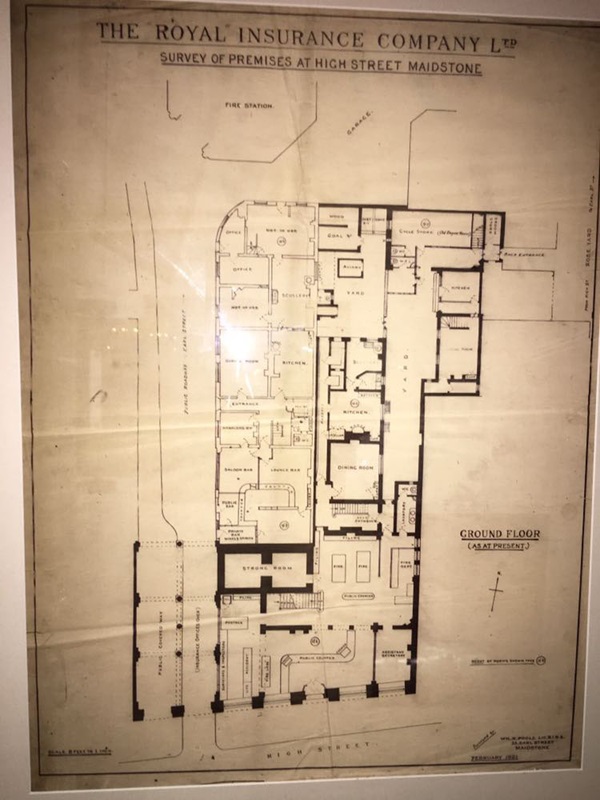
An architectural sketch of the building’s features.
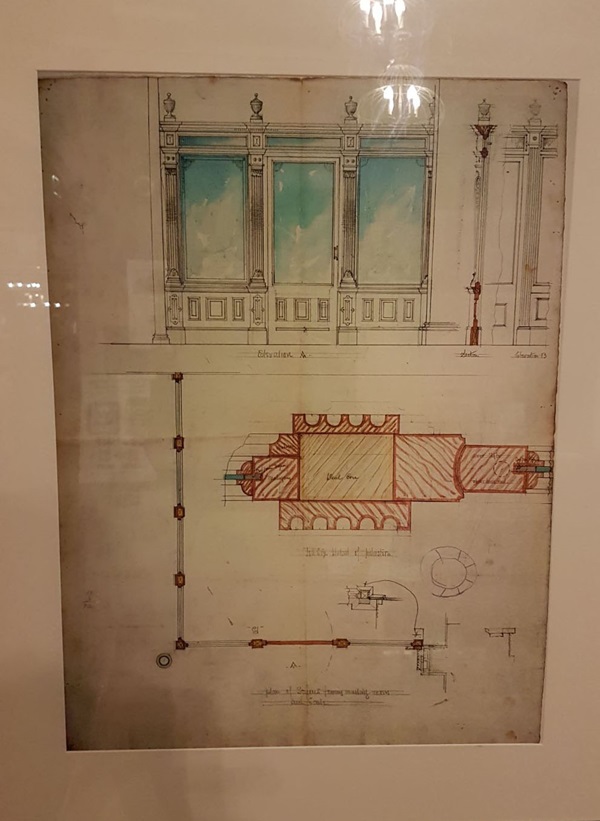
A photograph of High Street, Maidstone, c1912.
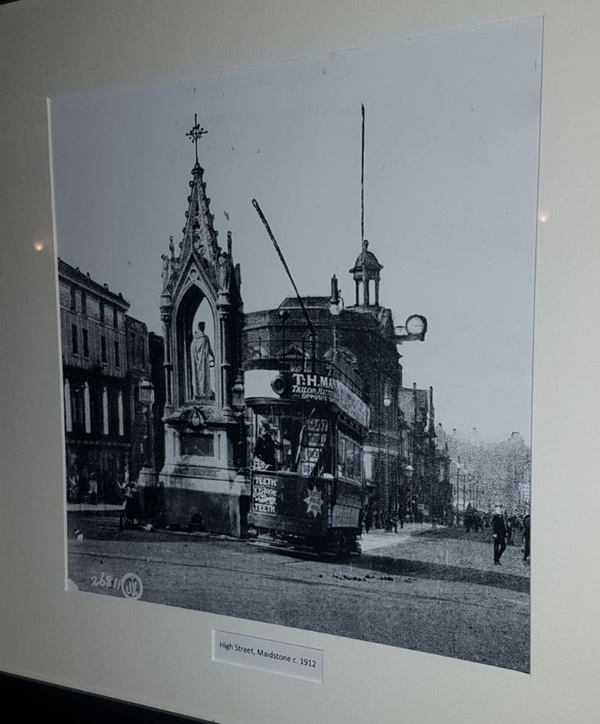
A photograph looking east along High Street, Maidstone, c1912.
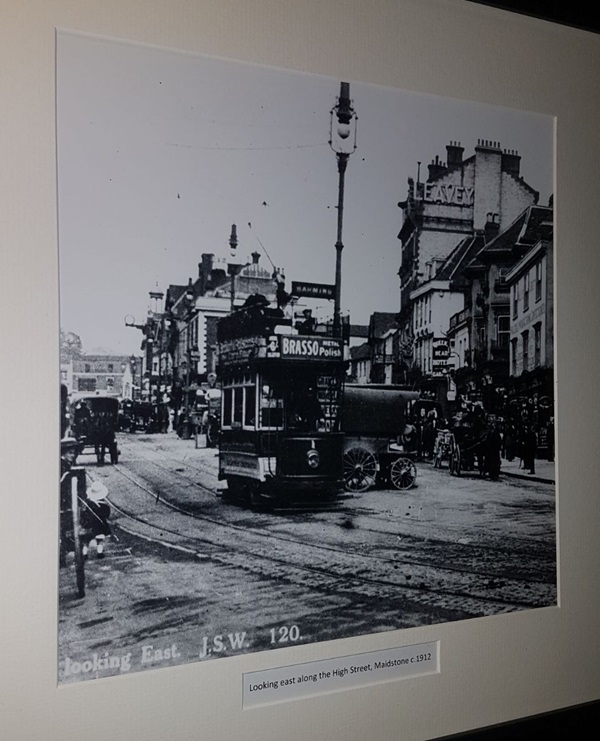
A photograph of the official opening of the Maidstone Tramway, July 14, 1904.
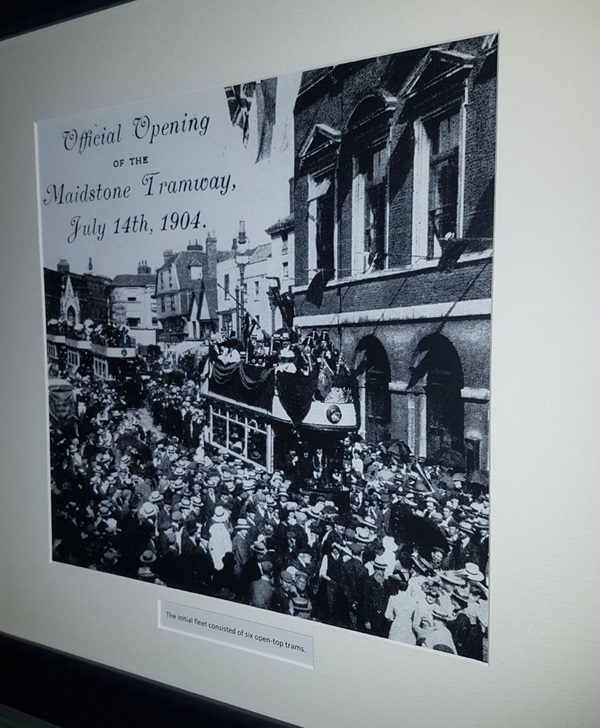
The initial fleet consisted of six open top trams.
Photographs of the old church that was part of the Kent Insurance Company building.
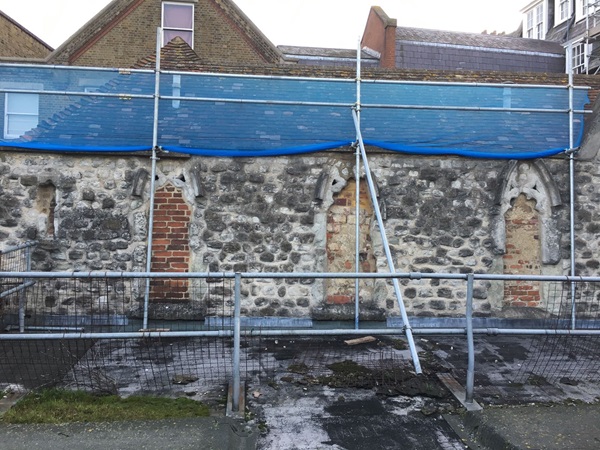
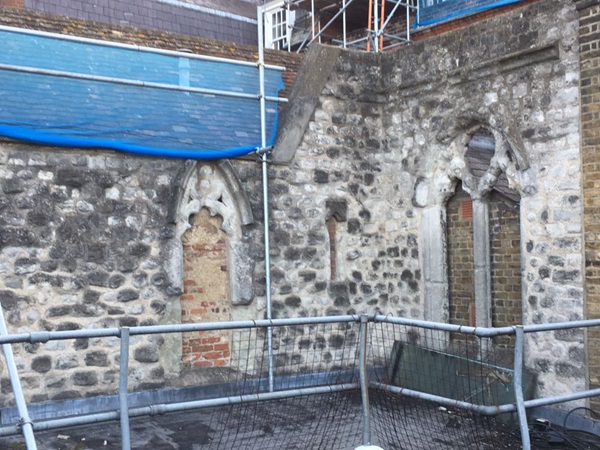
The church was torn down and then moved to the other side of the river, and rebuilt stone by stone. The original staff members that used to work for the company still meet here once a month.
External photograph of the building – main entrance.
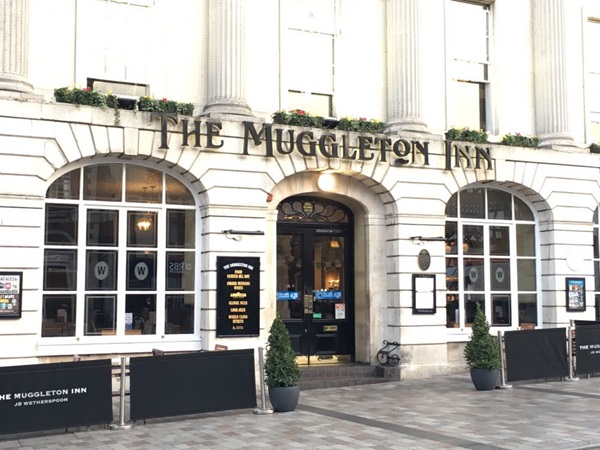
If you have information on the history of this pub, then we’d like you to share it with us. Please e-mail all information to: pubhistories@jdwetherspoon.co.uk